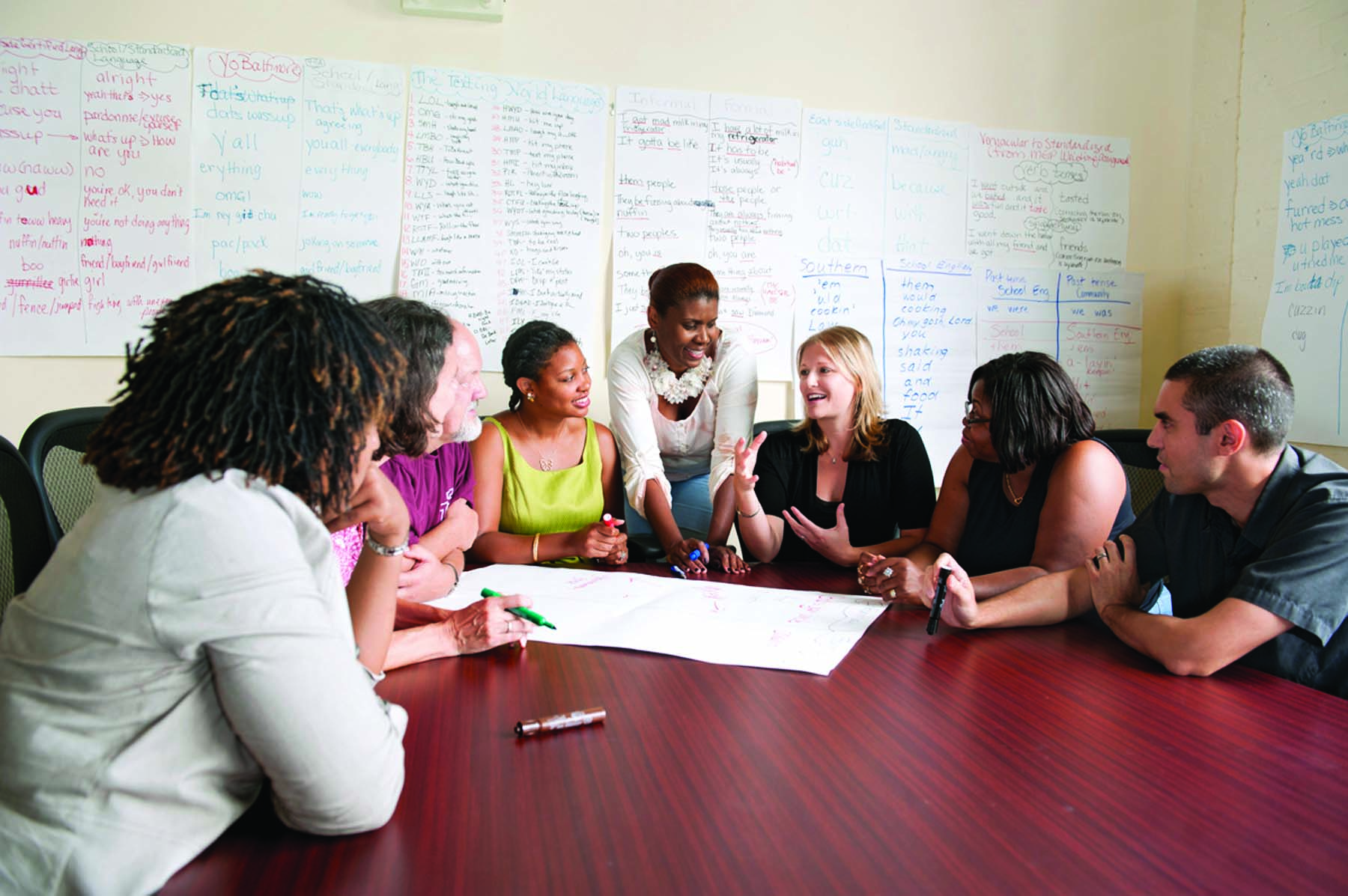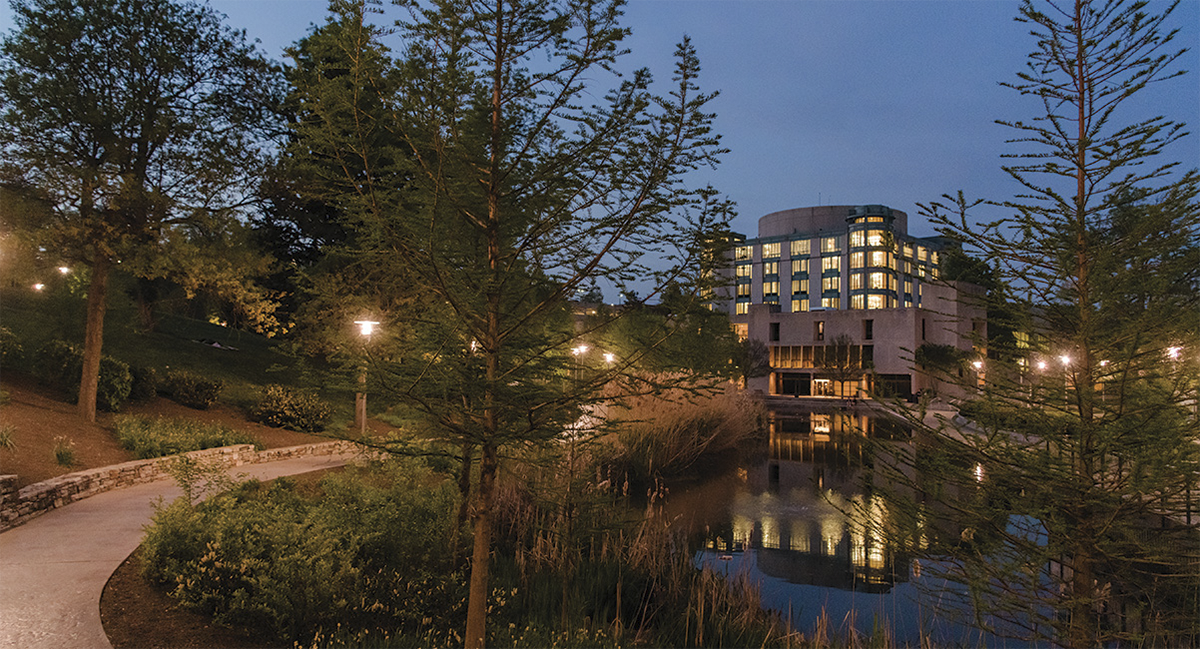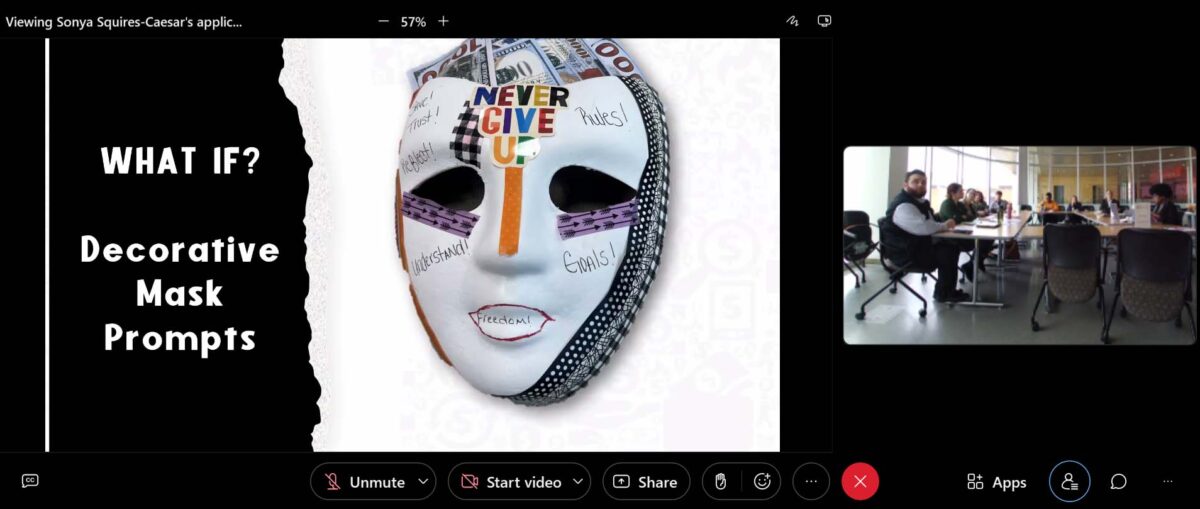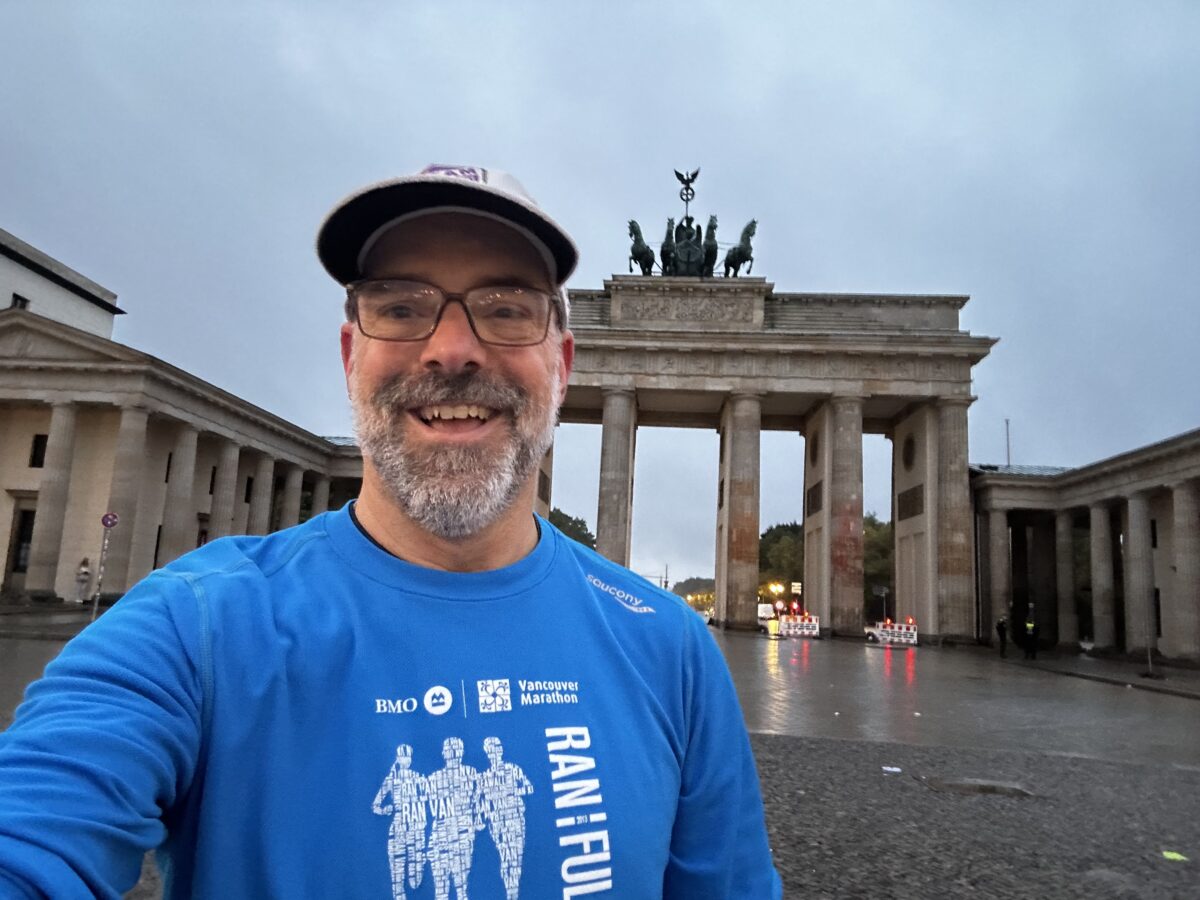LEARNING (FROM) THE LINGO
“Baldamoreans do not speak the king’s English.”
That’s how one Lexington Market patron jokingly described the city’s linguistic style to Inte’a DeShields ’13 in a podcast that was produced as a class assignment by the language, literacy and culture Ph.D. student.
But that’s exactly how Christine Mallinson, an assistant professor in the program, likes it.
“Not that much linguistic research has been done on the unique accents of Baltimore, but the city is a good laboratory for studying language variation,” Mallinson explains.
Charm City is a living laboratory for Mallinson’s research and pedagogy. The podcast, for example, was a product of firsthand research on linguistic variations in Baltimore by students in Mallinson’s “Language in Diverse Schools and Communities” class.
DeShields’ research and podcast explored common pronunciations among African American communities in Baltimore, especially a tendency to pronounce the city’s name as “Baldamore.” Other students researched language in multilingual communities and what Baltimore’s women say about themselves when they claim the word “hon.”
Mallinson created her own podcast, too, featuring teachers who discuss how language variation affects students and the strategies they’ve used to improve their teaching. Working with these teachers is the current focus of Mallinson’s research, and the subject of her recent book, Understanding English Language Variation in U.S. Schools, which she co-authored with Charity Hudley, an associate professor of English, linguistics, and Africana studies at the College of William and Mary.
“Language really matters in everything we do,” says Mallinson. She argues language is an important part of social identity: a definitional marker not only for others but for one’s self.
For students without a background in academic English, she continues, language can often be a barrier to achievement.
Mallinson is committed not only to describing that classroom challenge, but also to giving teachers tools to combat it. One teacher in Mallinson’s podcast tells the story of a non-native English speaker who was reluctant to participate in classroom discussions. However, when that teacher had the class read a story containing a Spanish word, the student eagerly joined in the discussion.
Mallinson has recently turned her focus to science and math teaching in K-12 classrooms, organizing workshops that train teachers to recognize and help students who struggle with the language elements of math and science curricula. If students understand the arithmetic in a word problem but produce a wrong answer because they misunderstand the question’s syntax, Mallinson and Hudley offer strategies to assist both students and teachers.
“Linguistically diverse students don’t leave their language patterns at the door when they come to math and science classrooms,” Mallinson explains. She and Hudley were recently awarded a three-year grant from the National Science Foundation to continue conducting workshops in Maryland and Virginia and follow up with teachers to learn which strategies are most successful.
“Linguists have usually studied language variation with respect to English classrooms,” Mallinson says. “Teachers are really excited that somebody is paying attention to language in math and science.”
— Chelsea Haddaway
(All of the podcasts are available at www.BaltimoreLanguage.com.)
A COLLECTING CALL
 It took Marie Spiro five decades – and a bit of heavy lifting – to create her personal collection of ancient artifacts. “Anytime I came back from a site,” she quips, “I had the heaviest suitcase.”
It took Marie Spiro five decades – and a bit of heavy lifting – to create her personal collection of ancient artifacts. “Anytime I came back from a site,” she quips, “I had the heaviest suitcase.”
Spiro is an associate professor emerita of art and archaeology at the University of Maryland, College Park, and her dramatic recounting of a particular object’s discovery can quiet a rowdy classroom. The collection features over 1,000 Greek, Roman and Byzantine artifacts, and contains mosaics, pottery, figurines and other pieces that date back as far as 15,000 years.
Indeed, students were at the heart of Spiro’s enterprise. She relished sharing the pieces she brought home with them in classes, encouraging them to touch and handle the objects in ways that they couldn’t at a museum, or by looking at a photograph.
So when Spiro decided to donate her collection, she looked for a place that would follow her example. She settled on UMBC’s ancient studies department, where the first third of Spiro’s collection was used in classrooms this past February. (The next third of the artifacts will come to campus in early 2012, with the final portion arriving in 2013.)
“I think the ancient studies program [at UMBC] is the best, I really do,” says Spiro. “I’m so happy that the collection has found a home. That’s my dream fulfilled.”
Hands-on learning is a priority for Marilyn Goldberg, chair of ancient studies, who says she is delighted with the gift. She points to the value in the number of objects in the collection that ancient people used in their everyday lives, and how students can now physically interact with ancient artifacts without even leaving campus.
 “Students can look at a piece in its entirety, look at the back of it and the profile of it, see how it’s made,” Goldberg says. “You can’t turn a picture over.”
“Students can look at a piece in its entirety, look at the back of it and the profile of it, see how it’s made,” Goldberg says. “You can’t turn a picture over.”
Goldberg and other campus leaders secured the financial support of local Greek organizations – including the Baltimore-Piraeus Sister City Committee and the American Hellenic Educational Progressive Associations of Baltimore and Washington, DC – to bring the collection to UMBC. UMBC’s plans for the collection include an archaeology lab that will be part of the second phase of construction of the university’s Performing Arts and Humanities Building. It will be a space where students can study the artifacts and display the exhibits they curate.
Students enrolled in a museum studies class taught by Esther Read, lecturer in ancient studies, in the spring semester were the first to use the collection. The class was a lecture/lab hybrid in which students discussed issues faced by museums in each session before working with the Spiro’s artifacts.
“I want them to see that these objects are more than just pretty things in cases. Whoever owned that piece originally, it had meaning to them. It had meaning to Marie Spiro when she collected it. It has different meaning now that she’s given it to us, and it’ll have a meaning here at the institution and for the student who works with it,” says Read. “You have so many groups and so many relationships with one object. Which story do you present?”
— Chelsea Haddaway
THE WRITE STUFF
 Many doctoral candidates will tell you that the biggest obstacle they face in obtaining a Ph.D. is a task that’s completely in their own hands: their doctoral dissertation.
Many doctoral candidates will tell you that the biggest obstacle they face in obtaining a Ph.D. is a task that’s completely in their own hands: their doctoral dissertation.
That’s why nine UMBC graduate students have assembled on the third floor of The Commons bright and early on a Monday in July to attend “Dissertation House” – a weeklong session of goal-setting, dedicated working time and concrete advice from experts aimed at getting them closer to finishing the capstone of their graduate experience.
The week of coaching was created by PROMISE – Maryland’s Alliance for Graduate Education and the Professoriate, which includes UMBC as well as the University of Maryland campuses at Baltimore and College Park. PROMISE is one of 21 alliances created by the National Science Foundation (NSF) to increase the number of U.S. students receiving Ph.D.’s in science, technology, engineering and mathematics (or “STEM”) disciplines, with a special focus on boosting the numbers of doctorates taken by minority students.
The “head coach” of Dissertation House is Wendy Carter, a nationally renowned expert on strategies for dissertation completion. (She’s even written a book and created a company – TADA!: Thesis and Dissertation Accomplished – to tackle the completion problems that students face.)
Carter shares her mantra with the assembled graduate students: “A good dissertation is a done dissertation.” After laying out challenges and offering tips (“When you read journal articles, always do a summary”), she has the students write their goals for the week on large sheets of white paper hung on the walls of the room.
The coaching starts as soon as the students present those goals to the group. Carter urges some students to clarify their tasks, and revise them towards greater self-accountability. “They need to be measurable,” she tells the group.
Renetta Garrison Tull, the director of the PROMISE program, says that participants gain valuable tips and advice from Carter and a wide range of guest speakers throughout the week – including Janet Rutledge, the dean of UMBC’s Graduate School and vice provost for graduate education, who stresses the importance of developing a strong mentoring relationship with one’s thesis advisor.
Tull also sees personal transformation and the acquisition of clarity, direction and self-discipline in the dissertation process as the key benefit of the weeklong experience. She tells the students that such things don’t come easily – and that Dissertation House is intended to be a catalyst to get them there. “We don’t leave you where you are,” she tells the group. “We move you forward. And sometimes that’s uncomfortable.” The Dissertation House was founded in 2006 and has shepherded over 70 students to Ph.D. completion in its first five years.
And when Friday rolls around for the Summer 2011 class, the sense that these nine students are on their way to joining those other alumni is palpable. The room is abuzz with activity, and the lists of goals placed on the wall on Monday are now emblazoned with items crossed out or checked off.
Look for them in a commencement ceremony soon.
— Richard Byrne ’86
DECADE OF SERVICE
 When Jason Woody ’04, sociology, received his acceptance letter to be part of the first class of the Shriver Living Learning Center (SLLC) ten years ago, he wanted to be a film major. And though he was interested in the social justice focus of the new center, he was also enticed by Erickson Hall, the sleek new dorm on campus that SLLC students would call home.
When Jason Woody ’04, sociology, received his acceptance letter to be part of the first class of the Shriver Living Learning Center (SLLC) ten years ago, he wanted to be a film major. And though he was interested in the social justice focus of the new center, he was also enticed by Erickson Hall, the sleek new dorm on campus that SLLC students would call home.
Woody found the SLLC’s service mentality contagious and it quickly came to define his worldview. In his sophomore year, he came across a poster asking students to dedicate service hours to honor those killed in the 9/11 attacks and took that call to heart. Back in his dorm room, he paged through biographies of the victims.
The story of Deora Bodley – a college student who died aboard United Flight 93, which crashed near Shanksville, Pennsylvania – gripped him most personally. Friends remembered Bodley for her own dedication to serving others. In her name, Woody launched a mentorship program for elementary-aged Baltimore youth to learn team-building skills: Project Team. The Shriver Center offered a van, help recruiting volunteers and credibility with partner organizations.
Shriver Center Director Michele Wolff remembers designing the SLLC to reflect “the true essence of service-learning.” Community members are required to complete both regular service throughout their residency and coursework that provides context and promotes reflection. As an affinity program, the SLLC also offers students a purposeful living experience with a built-in peer support network to help them confront the demands of service commitments.
Woody credits the support of fellow SLLC residents for his growth as a service leader. Kelly Subramanian ’08, biology and psychology, a former SLLC resident assistant, understands his perspective. “Personal relationships develop where you’re not only living together, you’re also serving together,” she says.
By the time Subramanian arrived a few years after Woody, the SLLC had already developed a reputation for its unique way of fostering students’ intellectual and personal growth. The program itself – more than the sleek new dorm – had become the attraction. “You’re helping other people and learning about what’s out there, but you’re also learning about yourself, what you value and what you want to do with your life,” Subramanian reflects.
Senior Benjamin Davis ’12, who hopes to teach in Baltimore City after graduation, calls the SLLC “a home for people just like me who expressed passion or interest in volunteering.” Davis tackled personal hardships and shyness, he says, by “working with other civically engaged individuals.”
Jason Woody never did take a single film class at UMBC. Instead, he pursued a career serving adults with mental illness. His organization, B’more Clubhouse, offers transitional employment and social and educational programs to help adults with mental illness develop confidence, skills and meaningful relationships, and reduce stigma against mental illness in the broader community. “I’ve seen people achieve milestones, big and small, that are life-changing,” he says.
Woody adds that he is still learning from others through service. His work has helped him develop patience and understanding. In this way, he says, the members of B’more Clubhouse are now his teachers.
— Dinah Winnick
Tags: ANCS, Christine Mallinson, Esther Read, Fall 2011, Inte'a DeShields, Janet Rutledge, LLC, Marie Spiro, Marilyn Goldberg, Michele Wolff, Renetta Tull




